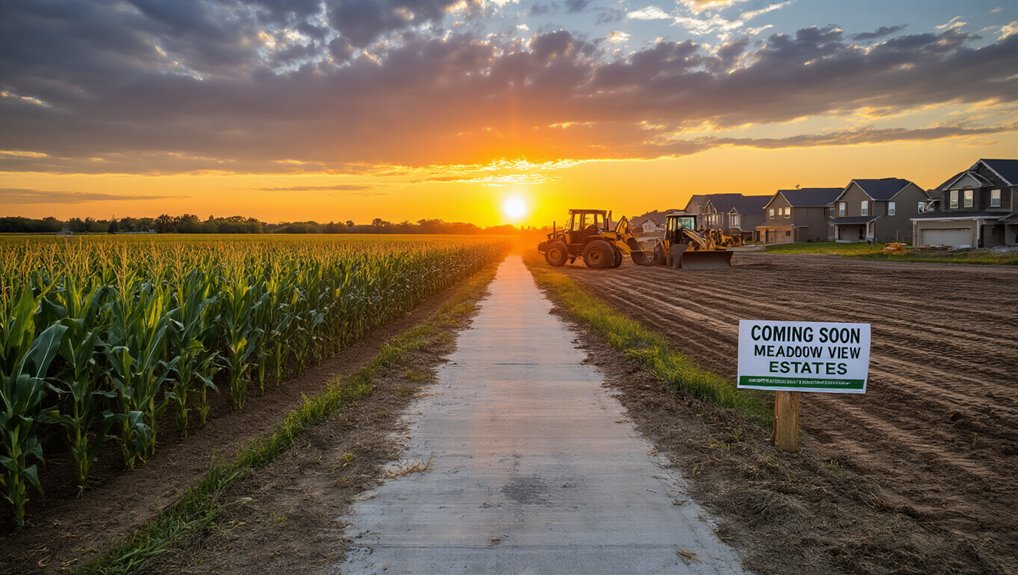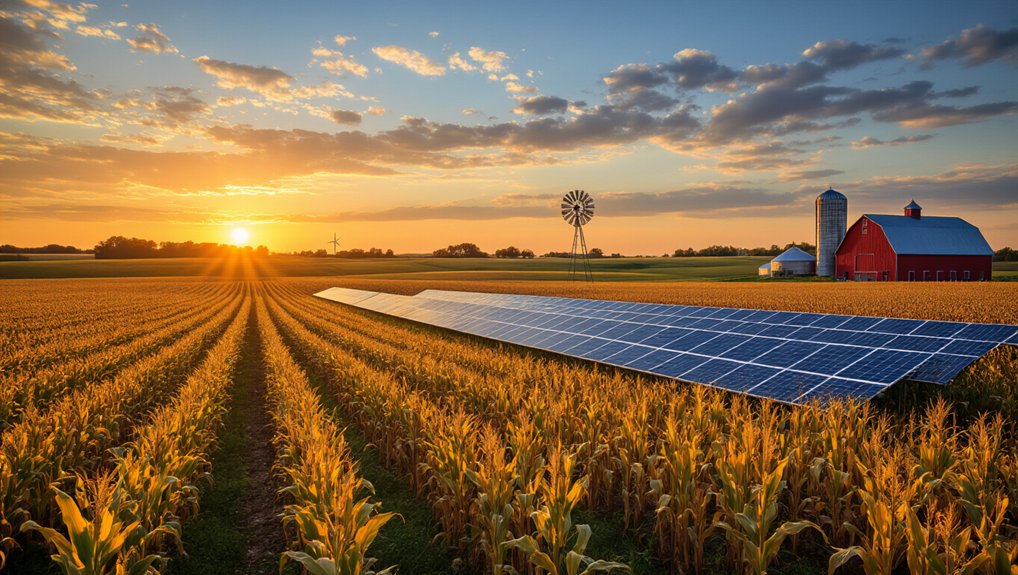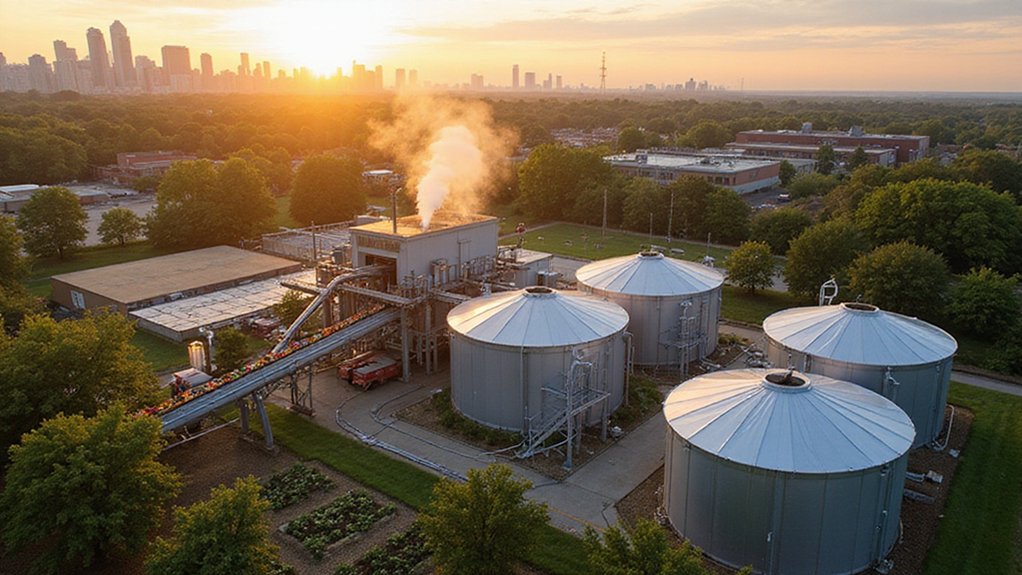America’s farmland is vanishing. Every minute, 4.3 acres of agricultural land disappears under concrete and asphalt, bulldozed for housing developments and strip malls. That’s right – while everyone’s busy arguing about solar panels on farms, real estate developers are quietly devouring the countryside at a breathtaking pace.
Between 2001 and 2016, developers converted 11 million acres of farmland and ranchland into suburbs and cities. Nearly 7 million acres became low-density residential sprawl – those cookie-cutter neighborhoods with names like “Meadow View” that ironically sit where actual meadows used to be. The remaining 4.1 million acres? Swallowed by urban development. At this rate, another 18.4 million acres will vanish by 2040.
11 million acres of farmland bulldozed for suburbs with ironic pastoral names like Meadow View
The culprits aren’t hard to find. Population growth pushes people into rural towns, and suddenly everyone wants their slice of country living. Local planning boards rezone farmland faster than you can say “subdivision,” transforming productive fields into half-acre lots with McMansions. The 2024 Purdue survey confirms that land sold for development commands twice the value of top-quality agricultural land, creating an irresistible financial incentive for conversion.
Meanwhile, institutional investors are treating farmland like a fancy stock portfolio. They’re snapping up agricultural land as an inflation hedge, driving values up 8.6% just from 2023 to 2024. With interest rates above 7%, the market dynamics have shifted dramatically, forcing more cash-heavy buyers into the mix while pricing out traditional farmers seeking loans.
Small farmers are getting crushed. Between 2017 and 2022, America lost 141,733 farms – and 80% of those were small operations making less than $2,500 annually. When land values skyrocket, farmers face an impossible choice: keep struggling or sell to the highest bidder. Guess who’s bidding? Not other farmers.
The big farms keep getting bigger while the little guys disappear. USDA data shows farms earning over $500,000 are actually increasing, gobbling up what’s left. It’s consolidation on steroids.
Some organizations like American Farmland Trust are tracking this disaster with fancy spatial mapping. States have tools – zoning laws, conservation easements, agricultural districts – but enforcement varies wildly.
The Agricultural Land Protection Scorecard tries to measure effectiveness, but scorecards don’t stop bulldozers.
The math is simple and brutal: 4.3 acres per minute, 6,192 acres per day, 2.26 million acres per year. That’s America’s agricultural heritage, paved over one subdivision at a time.
References
- https://www.swanlandco.com/2025/03/25/2025-land-market-outlook/
- https://release.nass.usda.gov/reports/fmla0525.pdf
- https://www.agriculture.com/farmland-prices-come-back-to-earth-after-years-of-growth-8745041
- https://investigatemidwest.org/2025/03/12/farmland-values-lose-steam-after-years-of-rapid-growth/
- https://farmlandinfo.org/publications/farms-under-threat-the-state-of-the-states/









